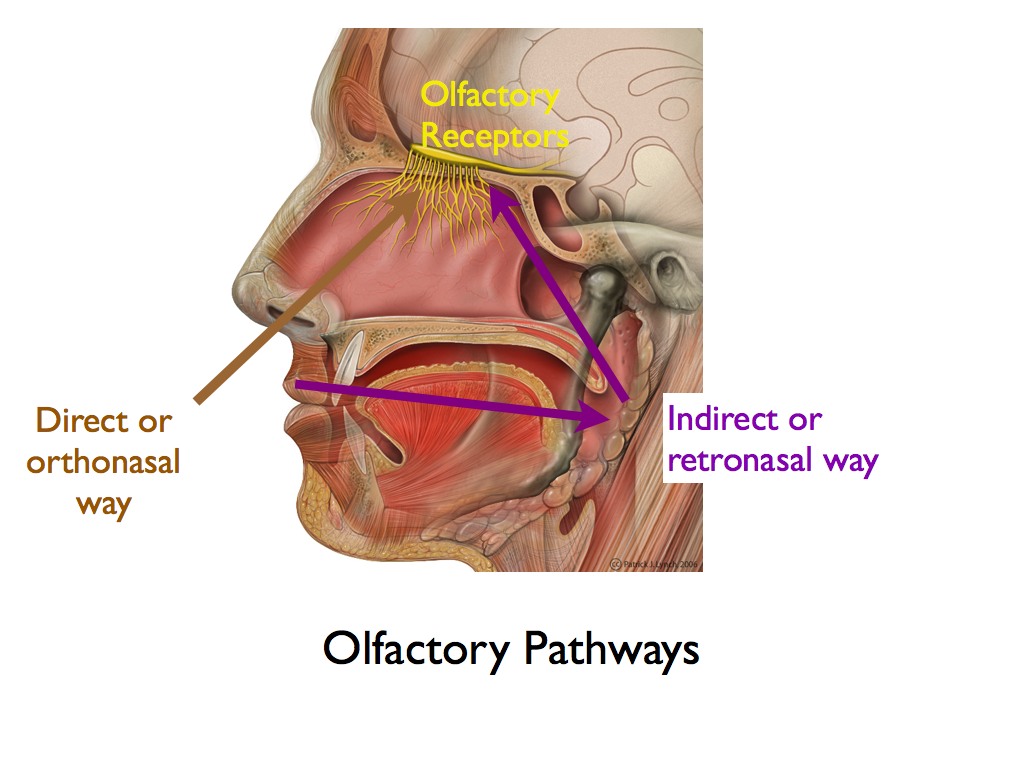Olfaction, the sense of smell, enables you to perceive the vast array of wine aromas
At the top of your nostrils resides the center of olfaction, your olfactory receptors. Their role is to capture scents.
You can smell via two ways:
- the orthonasal pathway (directly through your nostrils) or
- the retro-nasal pathway, indirectly when the wine is already in your mouth.
The figure on the left illustrates the two pathways.
80% of what you perceive when tasting wine is through olfaction.
Wine can account for more than a thousand volatile compounds that can evoke thousands of different aromas. Isn't that what we call complexity?
Receptors for olfaction
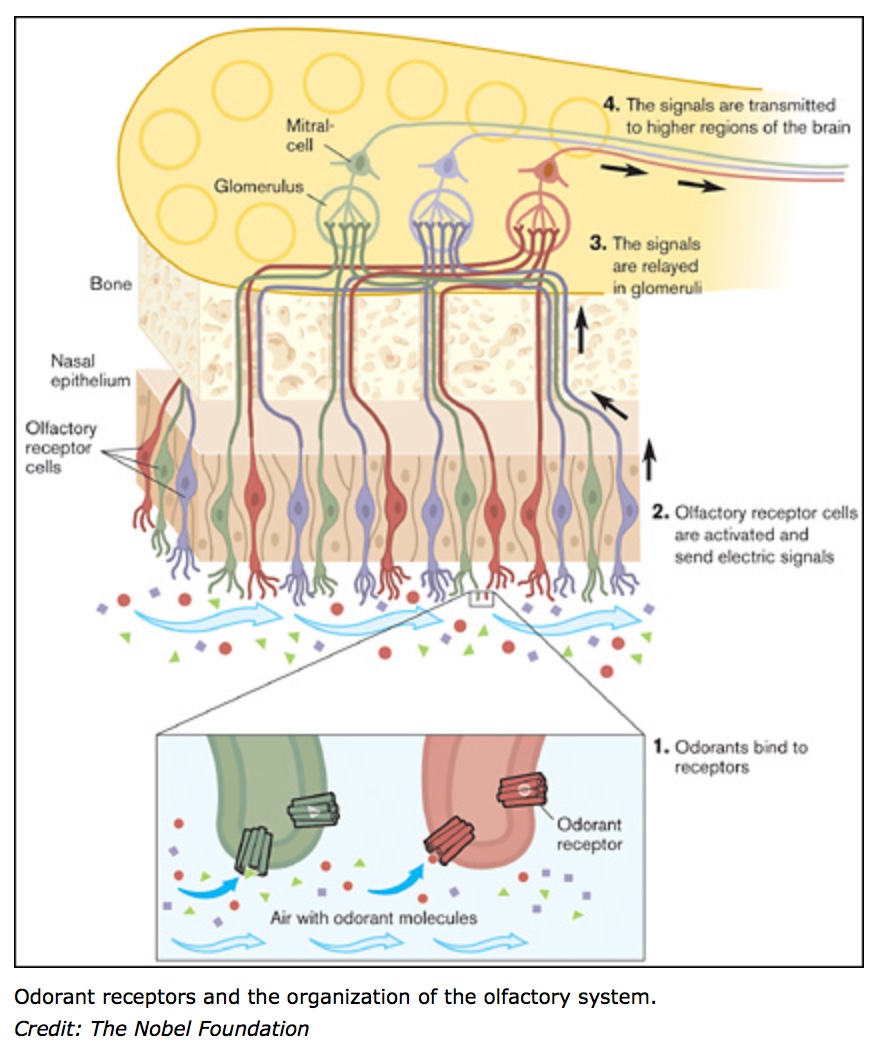
They are ciliated cells gathered at the top of the nostrils in a small area no larger than a standard mail stamp. The cilia are very important as they contain the entry way to the olfactory system.
The stimuli need to be airborne to land on the cilia. Then they need to find the right key to stimulate the specific receptor that will inform you that some aromas are present. Of course, the more intense is an odor, the more numerous are the stimuli to activate these receptors and get your attention.
Why can't you smell when you have a cold?

The mucus generated will block the pathways and prevent the odorants from reaching the cilia.
It is better to avoid tasting when you have cold or allergy symptoms.
I found rinsing my nostrils with saline water helpful to clear the nasal passages and allow me to use my sense of smell.
It takes more than one compound to evoke one aroma
That's the exception when one volatile compound evokes one single aroma. Most often, several compounds interact to create one aroma. For example, to recreate a strawberry aroma, a flavorist may need to mix five compounds.
Most of what you perceive when smelling a glass of wine is the combination of many compounds and their equilibrium with the other wine constituents.
This represents a challenge for us sensory scientists. When I train people to identify the various aromas in wines, I like to use aroma standards that can evoke specific perceptions. I can use pure compounds, or food flavorings, or actual food products. Below is a table showing some examples of these standards (Table 1).
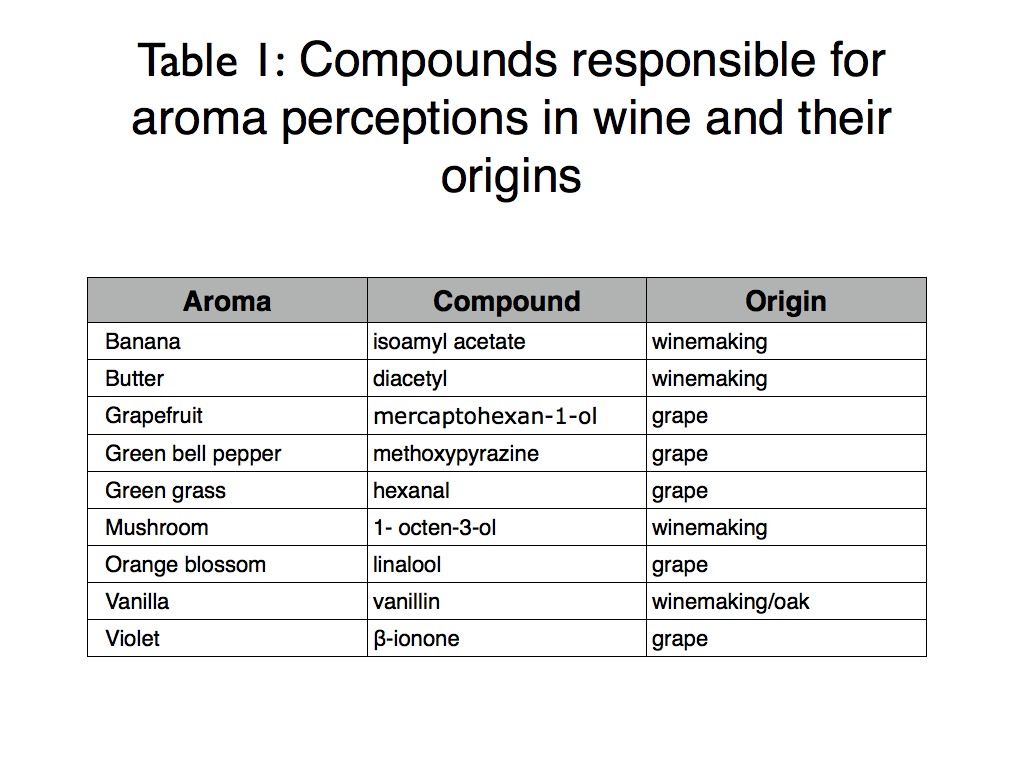
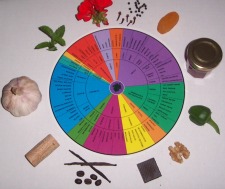
I created a Wine Aroma Dictionary that gives you more details on the origin of the most common wine aromas.
Many chemists have tried to decipher the relations between a molecule structure and its olfactive quality. This is not easy.
A same aroma can be evoked by molecules of very different structures. On the same vein, two molecules with very similar chemical structure can evoke very different aroma perceptions.
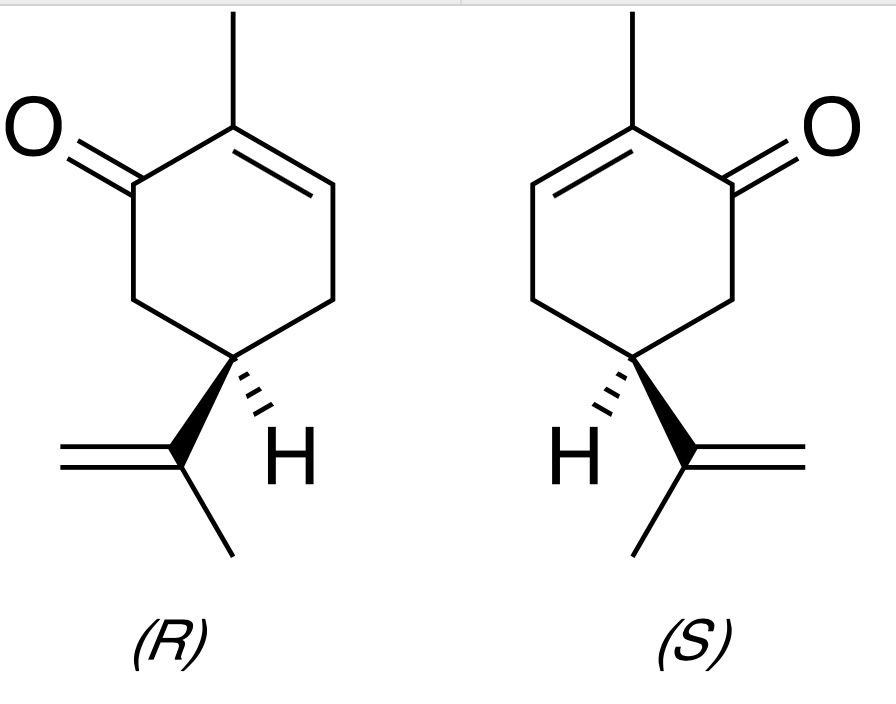
Carvone can exist under two configurations. Configuration R smells like Spearmint while Configuration S smells like Caraway.
These two configurations are likely received onto different olfactory receptors to evoke such different aromas.
Researchers at the Monell Chemical Senses Center are part of a collaborative effort to develop a mathematical model predicting if a molecule has an odor and what type of odor. This is an international collaboration, where scientist used AI, artificial intelligence, to develop models from an existing data set.
More details are provided in this article.
Olfaction skills vary among individuals
|
The ability to detect aromas vary tremendously among individuals. The detection threshold, or the molecule concentration for which we start detecting a smell, varies a lot for most wine aroma compounds.
This graph illustrates how an odor threshold can vary among people from the same generation or age group and vary also among generations - as we get older, our sensitivity decreases. |
Home > Five Senses > Olfaction
